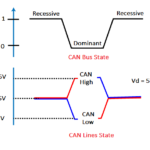Ohm’s Law is the classical physics explanation of the linear relationship between voltage, current, and resistance in a conductor. Quantum mechanics provides insights into the mechanisms behind this behavior, explaining why Ohm’s Law still holds true even on very small scales where quantum effects are significant.
Ohm’s law is a macroscopic view of classical physical relationships. It was extended to the microscopic scale by the semi-classical Drude model and can be examined at the quantum scale using the quantum metrology triangle (QMT).
The original version of Ohm’s law was empirical, based on experimental observations, rather than being derived from fundamental principles. It was first published by German physicist Georg Simon Ohm in his book “Die galvanische Kette, mathematisch bearbeitet” (The Galvanic Circuit Investigated Mathematically) in 1827.
Drude model
The Drude model was an early attempt to connect Ohm’s law with basic physics. It moved the macroscopic focus of Ohm’s law down to the microscopic level. It’s based on the scattering of electron flow by the relatively immobile ions in a metal (Figure 1). It’s an application of kinetic theory using Maxwell–Boltzmann statistics for the gas of electrons.

The Drude model is a beginning, but it has significant limitations, including:
- Doesn’t consider the effects of temperature.
- Doesn’t explain insulators or the skin effect at high frequencies.
- Doesn’t recognize the existence of band gaps or electron energy levels.
Semi-classical to quantum
The Drude model is based on classical mechanics. But the assumption that the electrons exist as a “gas” of particles, implicitly recognizing their quantum nature, makes the model semi-classical. However, the Drude model doesn’t include other quantum effects, like the Fermi-Dirac distribution and wave-particle duality.
Incorporation of the Fermi-Dirac distribution is important when describing Ohm’s law since it’s essential for understanding the behavior of electrons in solids, especially metals, and phenomena like electron mobility, band structure, and doping effects.
Free electron model
The free electron model, also called the Drude-Sommerfeld model, combines the classical Drude model with quantum mechanical Fermi-Dirac statistics. It’s still a simplified model. It considers a metal as a “gas” of free non-interacting electrons, but ignores the effects of the crystal lattice.
The model explicitly includes quantum mechanical effects by treating electrons as waves and using the Fermi-Dirac distribution for their energy levels. It can be used to accurately predict certain properties of metals, like electrical and thermal conductivity.
The free electron model has been improved by adding more detailed quantum effects, leading to the development of the Fermi gas and the nearly free electron models.
The Fermi gas model uses the quantum mechanical version of an ideal gas to support improved results, especially at very low temperatures. The nearly free electron model introduces a weak periodic potential to account for the lattice structure of a solid and can provide a more complete description of energy bands and band gaps.
Both the Fermi gas and nearly free electron models are improvements, but they involve significant simplifications and remain incomplete. The theoretical underpinning of Ohm’s law continues to evolve.
Quantum metrological triangle
While the theoretical understanding is still under development, the QMT firmly bases the foundations of Ohm’s law on quantum electrical constants. The triangle is based on the Josephson effect for voltage, the quantum Hall effect for resistance, and single-electron tunneling for current. It incorporates fundamental constants like the electron charge (e) and the Planck constant (h) (Figure 2).

The QMT is used as a test and confirmation of Ohm’s law at quantum scales. The QMT also provides a structure for measuring electron charge (e) and Planck constant (h) with high accuracy.
Physicists use the QMT to test the consistency of single-electron tunneling, the Josephson effect, and the quantum Hall effect, as well as their relationship to fundamental constants. Finally, the QMT is vital for the SI unit system because it provides a way to verify the electrical units (volt, ohm, and ampere), using fundamental quantum phenomena.
Summary
Ohm’s law originated from empirical observations that utilized concepts from classical physics. Its theoretical basis continues to evolve using increasingly complete models based on quantum mechanics. Even while its theoretical underpinning is evolving, its utility has been proven using the QMT, which has confirmed it at quantum scales and has been used to verify fundamental quantum electrical units.
References
A New Era for the Ampere, Physics
A primary quantum current standard based on the Josephson and the quantum Hall effects, Nature communications
Drude model, TU Delft
Exactness of linear response in the quantum Hall effect, arXiv
Metrology in electricity and magnetism: EURAMET activities today and tomorrow, Metrologia
Ohm’s Law Refutes Current Version of the Special Theory of Relativity, Journal of Modern Physics
Ohm’s Law Survives at the Atomic Scale, IEEE Spectrum
Relativistic covariance of Ohm’s law, International Journal of Modern Physics
Understanding of physics on electrical conductivity in metals; Drude – Sommerfeld – Kubo, Binghamton University
EEWorld Online related links
The basics of Kelvin connections
What’s a half digit and are they all the same?
Does Kirchhoff’s Voltage Law really fail?
When to measure conductivity instead of resistivity
Electric charge and instruments used to measure it





Leave a Reply